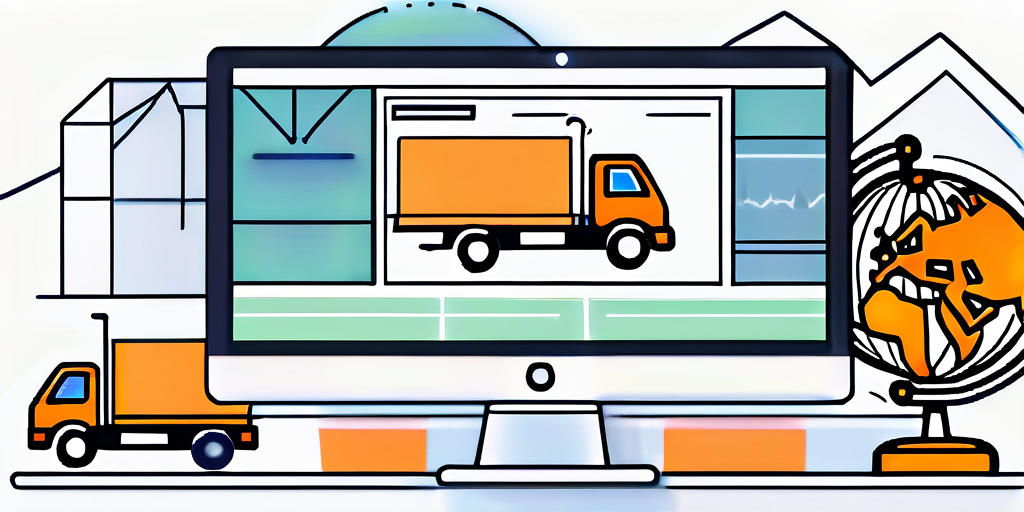In today’s digital age, starting an online business has become more accessible than ever before. One lucrative business model that has gained significant popularity is dropshipping. If you’re looking to create a successful dropshipping business, Shopify is the perfect platform to get started. In this ultimate guide, we will cover everything you need to know about dropshipping with Shopify, from understanding the basics to marketing your store effectively.
Understanding the Basics of Dropshipping
First things first, let’s grasp the concept of dropshipping. What exactly is dropshipping? In simple terms, dropshipping is a business model where you don’t need to keep any inventory. Instead, you partner with suppliers who will fulfill customer orders on your behalf. This means you can focus on growing your business without the hassle of warehousing and shipping products yourself.

Dropshipping is a retail fulfillment method where a store doesn’t keep the products it sells in stock. Instead, when a store sells a product, it purchases the item from a third party and has it shipped directly to the customer. As a result, the merchant never sees or handles the product. This minimizes the risk and cost associated with traditional retail models.
Now that you understand the fundamental concept of dropshipping, let’s explore how Shopify fits into this equation.
What is Dropshipping?
Dropshipping is a retail fulfillment method where a store doesn’t keep the products it sells in stock. Instead, when a store sells a product, it purchases the item from a third party and has it shipped directly to the customer. As a result, the merchant never sees or handles the product. This minimizes the risk and cost associated with traditional retail models.
Dropshipping has gained popularity in recent years due to its low barrier to entry and the potential for high-profit margins. It allows entrepreneurs to start an online business without the need for a physical store or a large upfront investment in inventory. With dropshipping, you can sell a wide range of products without having to worry about manufacturing, storage, or shipping logistics.
The Role of Shopify in Dropshipping
Shopify is a leading eCommerce platform that enables entrepreneurs to start their online stores. It provides a user-friendly interface and powerful features specifically designed for dropshipping businesses. With Shopify, you can easily set up and manage your online store, add products, and process customer orders seamlessly.
One of the key advantages of using Shopify for dropshipping is its integration with various dropshipping apps and suppliers. Shopify’s app store offers a wide range of plugins and extensions that allow you to connect your store with popular dropshipping platforms like Oberlo, Printful, and AliExpress. These integrations make it easy to import products, sync inventory, and automate order fulfillment.
Furthermore, Shopify provides a range of tools and resources to help you market and promote your dropshipping business. From customizable themes and SEO optimization features to social media integrations and email marketing campaigns, Shopify equips you with the necessary tools to attract and engage customers.
Setting Up Your Shopify Store
Once you have decided to start dropshipping, the first step is to set up your Shopify store. Let’s explore the essential aspects of this process.
Choosing the Right Theme
Aesthetics play a crucial role in attracting customers to your store. Shopify offers a wide range of themes to choose from, catering to various industries and store types. It’s essential to select a theme that aligns with your brand image and makes navigation intuitive for your customers.
When choosing a theme, consider the color scheme, typography, and overall layout. Think about your target audience and the kind of visual experience you want to create for them. Are you going for a sleek and modern look or a more rustic and cozy vibe? Take your time to explore the different options available and preview how they would look with your content.
Remember, your theme should not only be visually appealing but also functional. Ensure that it supports the features you need, such as a responsive design for mobile devices, easy customization options, and compatibility with popular Shopify apps. A well-chosen theme will set the foundation for a successful online store.
Adding Products to Your Store
After setting up your store’s appearance, the next step is to add products. Research reputable suppliers and select the products you wish to sell in your niche. Shopify’s user-friendly interface allows you to efficiently add products, including product descriptions, pricing, and attractive images.
When adding products, it’s crucial to provide detailed and accurate information. Write compelling product descriptions that highlight the unique features and benefits of each item. Use high-quality images that showcase the product from different angles and provide a clear representation of its appearance.
Consider organizing your products into categories or collections to make it easier for customers to navigate and find what they are looking for. This can enhance the overall shopping experience and increase the chances of making a sale. Additionally, take advantage of Shopify’s built-in SEO features to optimize your product pages for search engines, improving your store’s visibility and attracting organic traffic.
Remember, the success of your Shopify store depends not only on the products you offer but also on how you present them. Take the time to curate a visually appealing and user-friendly online store that captivates your audience and encourages them to explore and make a purchase.
Selecting the Best Dropshipping Suppliers
When running a dropshipping business, selecting reliable suppliers is crucial for your success. Let’s dive into the best practices for choosing and building relationships with your suppliers.

But before we delve into the details, let’s take a moment to understand the importance of finding the right dropshipping suppliers. Your suppliers are the backbone of your business, responsible for sourcing and delivering the products to your customers. They play a pivotal role in ensuring customer satisfaction and ultimately, the success of your venture.
Criteria for Choosing Suppliers
When evaluating potential suppliers, consider factors such as product quality, shipping times, and customer service. These are the pillars that support a successful dropshipping business.
Product quality is of utmost importance. Your customers expect to receive high-quality products that meet their expectations. Look for suppliers who offer products that are well-made, durable, and in line with your brand’s standards.
Shipping times can make or break your business. Customers today have high expectations when it comes to delivery speed. Look for suppliers who can consistently deliver products within a reasonable timeframe, ensuring that your customers receive their orders promptly.
Customer service is another crucial aspect to consider. A supplier with excellent customer service can help you resolve any issues that may arise, ensuring a smooth and seamless experience for your customers. Look for suppliers who are responsive, helpful, and willing to go the extra mile to assist you.
Building Relationships with Suppliers
Strong supplier relationships are vital for long-term success in dropshipping. While finding the right suppliers is important, building and nurturing relationships with them is equally crucial.
One key aspect of building relationships with suppliers is maintaining open communication. Regularly communicate with your suppliers to discuss any concerns, provide feedback, or simply stay updated on the latest developments. This open line of communication will foster trust and collaboration.
Providing clear expectations is another essential element. Clearly communicate your requirements and expectations to your suppliers, including product specifications, packaging guidelines, and delivery deadlines. This clarity will help avoid misunderstandings and ensure that both parties are on the same page.
Lastly, fostering a mutually beneficial partnership is key. Remember that your suppliers are also running a business, and it’s important to create a win-win situation. Offer incentives for exceptional service, explore ways to increase sales together, and always strive for a partnership that benefits both parties.
By following these best practices, you will be well on your way to selecting the best dropshipping suppliers and building strong relationships with them. Remember, your suppliers are not just vendors; they are your partners in success.
Managing Your Shopify Dropshipping Business
Now that your store is up and running, it’s essential to effectively manage your dropshipping business to ensure profitability and customer satisfaction.

Handling Orders and Shipping
When a customer places an order, it’s crucial to promptly process and fulfill it. This involves coordinating with your suppliers to ensure swift shipping and accurate tracking information to keep your customers informed and satisfied.
Customer Service Best Practices
Providing excellent customer service is key to establishing a reputable brand and fostering customer loyalty. Address customer inquiries and concerns promptly, offer hassle-free returns and exchanges, and strive to exceed customer expectations to build a strong customer base.
Marketing Your Shopify Dropshipping Store
Effectively marketing your dropshipping store is vital for driving traffic and generating sales. Let’s explore some strategies to boost your store’s visibility.
SEO Strategies for Your Store
Implementing search engine optimization (SEO) techniques can help your store rank higher in search engine results, making it easier for potential customers to find you. Research relevant keywords, optimize your product descriptions, and ensure your website is user-friendly and easy to navigate.
Social Media Marketing Techniques
With the ever-growing influence of social media, leveraging platforms like Facebook, Instagram, and Twitter can significantly enhance your store’s reach. Develop a social media strategy, create engaging content, and interact with your target audience to build brand awareness and drive traffic to your store.
By following this ultimate guide, you now have a comprehensive understanding of dropshipping with Shopify. From setting up your store to managing operations and effectively marketing your business, you have the tools to create a successful and profitable dropshipping venture. Take action today, and embark on your entrepreneurial journey with Shopify!

